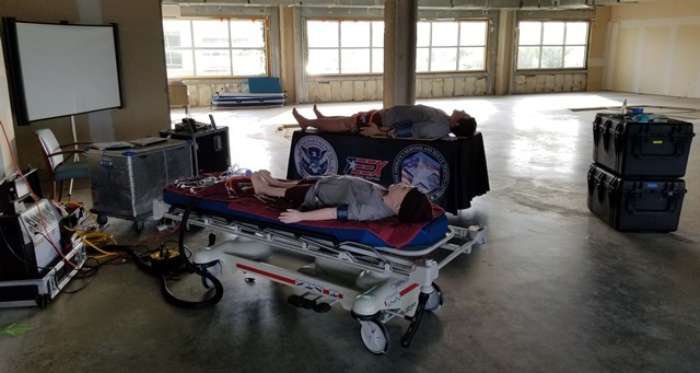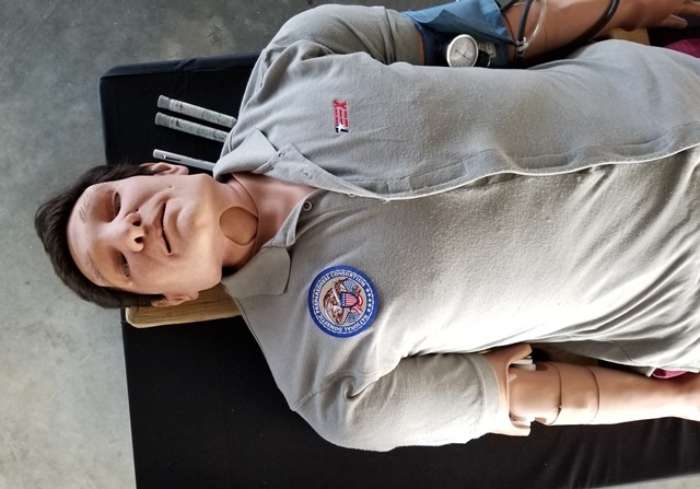St. Luke's Health joins CommonSpirit.org soon! Enjoy a seamless, patient-centered digital experience. Learn more

Human Patient Simulators, as shown here, provide hands-on experience for emergency personnel. CHI St. Luke’s Health-Memorial Livingston hosted 35 local participants during a “Medical Management of Chemical, Biological, Radiological, Nuclear, and Explosive Events” (CBRNE) course about how to protect themselves and the community in the event of a man-made or technological disaster.

Human Patient Simulators, as shown here, provide hands-on experience for emergency personnel. CHI St. Luke’s Health-Memorial Livingston hosted 35 local participants during a “Medical Management of Chemical, Biological, Radiological, Nuclear, and Explosive Events” (CBRNE) course about how to protect themselves and the community in the event of a man-made or technological disaster.
Healthcare professionals must always be prepared for unforeseeable circumstances, which can include natural, as well as man-made and technological, disasters. As part of continuing education that occurs regularly for hospital employees, St. Luke’s Health-Memorial Livingston recently hosted a “Medical Management of Chemical, Biological, Radiological, Nuclear, and Explosive Events” (CBRNE) course for local emergency management officials.
“The multi-discipline make-up of this course helps strengthen communications between us and our community partners so we can all be prepared in case of a major emergency,” said Kristi Froese, Vice President of Clinical Operations at St. Luke’s Health-Memorial Livingston. “We want to make sure we are all on the same page and ready to help our community in the event of such a terrible disaster.”
There were 35 course participants, including St. Luke’s Health-Memorial employees Natisha Warren, Infection Prevention Specialist; Thomas Brown, Emergency Department Coordinator; Ashley Ojeda, Lead Diagnostic Technician; Courtney Slott, Respiratory Therapist; and Latisha Jackson, Emergency Department Charge Nurse. Other course participants included members of the local EMS agencies, the Livingston Fire Department, the Liberty Fire Department, Houston EMS and the public health department.
The course was a combination of facilitated discussions, small-group exercises, Human Patient Simulator hands-on scenarios and traditional classroom discussions. During the two-day course, the group discussed environmental factors and protective issues for both first responders and the public; recognizing and identifying CBRNE agents and how they affect the human body; self-protection; and how to treat patients who have been exposed to CBRNE agents.
“Bringing together those who play crucial roles in times of disaster to learn what everyone does and how it fits the mitigation effort is valuable in any emergency situation, especially one of this scope and potential scale,” said Mike Rankin, Market Facilities Safety Officer and Emergency Management Coordinator for St. Luke’s Health.
Publish date:
Monday, June 18, 2018Looking for a doctor? Perform a quick search by name or browse by specialty.